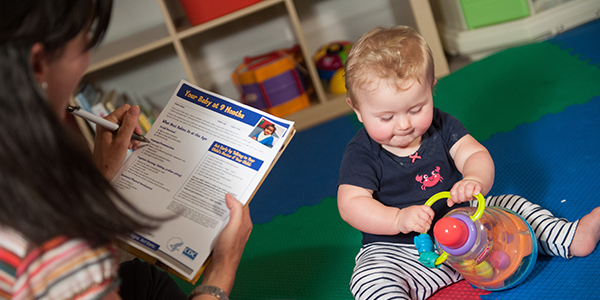Every child is a universe of possibilities. But for some children, developmental and learning challenges can cast a shadow over those bright prospects. This is where the power of early intervention shines in the vast expanse of the American educational landscape, acting as a beacon of hope for families and educators alike.

Early intervention, at its core, is a proactive approach that identifies and addresses developmental disabilities or delays in children from birth to age five. The philosophy is simple yet profound: address challenges early on to pave the way for long-term success. It’s akin to catching a falling star – harnessing its potential before it’s too late.
In the diverse terrain of the U.S., the need for such a system became evident decades ago. Researchers and educators noticed a pattern: when learning or developmental issues were addressed early in a child’s life, the trajectory of their educational journey shifted dramatically. The earlier the intervention, the better the outcomes, both academically and socially.
Let’s journey to Boston, where a public preschool program stands as a testament to the impact of early intervention. Here, educators work meticulously with toddlers showing signs of speech and language delays. Through targeted exercises, playful interactions, and personalized attention, many of these children transition to mainstream kindergarten classrooms, their earlier challenges mere whispers of the past.
The beauty of early intervention lies not just in its methods but in its holistic approach. It’s not solely about academics. It encompasses physical, cognitive, communication, social, and emotional development. And it’s not an isolated endeavor. Schools, parents, therapists, and communities come together, forging a united front.
In places like California, this collaborative spirit is evident in programs where parents are active participants in their child’s intervention process. They’re not just passive observers; they’re empowered with tools, resources, and strategies to support their child’s growth beyond the classroom walls.
Of course, the path to effective early intervention isn’t without its challenges. Identifying the signs of a delay or disability requires careful observation and assessment. It demands skilled professionals, updated resources, and a system that can swiftly transition from detection to action.
But the U.S., with its penchant for innovation and its deep commitment to every child’s right to education, continues to invest in this realm. Programs under the Individuals with Disabilities Education Act (IDEA) like the Early Intervention Program for Infants and Toddlers with Disabilities are making waves, ensuring that support reaches those who need it most.
In conclusion, early intervention is more than a strategy; it’s a promise. A promise that every child, regardless of their challenges, will be given a chance to shine. As American schools and communities continue to champion this cause, they’re not just altering educational trajectories; they’re transforming lives, one child at a time.















Add Comment